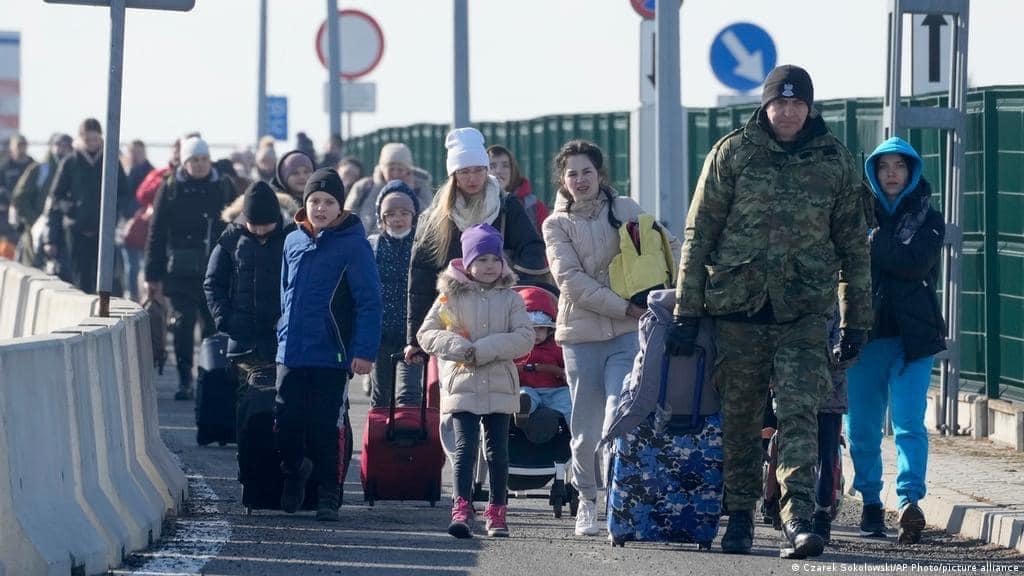If Russia’s President Putin had decided either to declare a formal war against Ukraine or, conversely to declare some form of victory in the ‘special military operation’ that he launched more than two months ago, then yesterday was the moment to do so. Putin could have used his Victory Day speech either to escalate Russia’s military operations by mobilizing more troops or to de-escalate it by using state-controlled media to inflate moderate gains in the face of Western weaponry and moralizing. Instead, Putin recycled the Kremlin’s claims of the conflict being essential to defend Russia against neo-Nazis, NATO’s interference in Ukraine, and the latter’s potential development of nuclear weapons.

In the absence of Russian escalation or de-escalation, it is highly likely that the conflict in Ukraine is heading for a military strategic stalemate, with the frontlines becoming frozen near their current positions. Russia is unlikely to make significant gains absent at least a partial mobilization and an increased application of overwhelming firepower. Ukraine, on the other hand, will be increasingly able to counter Russian offensives as Western military aid and funds become increasingly decisive. However, Ukraine will also fear conducting major offensive operations against Russia’s positions, both to avoid high casualties and to avoid the impact on its already shattered civilian population. While the frontline stagnates, the decisive long-term issues will remain the impact of international sanctions (both in Russia and the West), the information campaign, and their effect on decision-makers in Moscow and on the coalition of Western nations.
Three factors will likely become more significant in this more static phase. Firstly, each successful operation to capture, re-capture or defend any position gains increased strategic importance, as comparatively small gains feed competing information campaigns. For example, the Ukrainian recapturing of territory around Kharkiv, the stoic defense of the Azovstal plant in Mariupol, and ongoing fighting around the town of Izyum all feed into this narrative. For both sides, offensive operations will become more difficult as both sides increase their defensive resolve around the borders of the Donbas and the accepted lines of control in February.
Secondly, the nature of weapons used by both sides will be increasingly important. The conflict has revealed that Russia’s tanks are vulnerable to portable anti-tank weapons, their aircraft are vulnerable to portable air-defense weapons, and their battlefield command and control and other high-value targets are vulnerable to armed UAVs such as the Turkish TM-2 Bayraktar. This combination of weaponry, when added to the cumulative losses already sustained, has severely reduced Russia’s ability to take and hold territory. The most valuable elements in the Russian inventory are ‘deep strike’ cruise and ballistic missiles, or aircraft with precision-guided munitions. However, Moscow is reportedly running short of such advanced weaponry, with swift replenishment hampered by the sanctions imposed on their sophisticated components. This combination of factors leaves Russia essentially with its artillery, which can destroy infrastructure but not take and hold territory, and its already demoralized infantry which can be held back by determined defenses.
The third related military consideration aspect is the likely increasing use of irregular or covert forces. Russia used its special forces to such effect in the 2014 annexation of Crimea that the West likely over-estimated their actual capability in the face of determined opposition. Reports of up to 1000 Wagner group employees currently in the Donbas region, and potential ‘false flag’ operations in Transnistria, reinforce the likelihood of Russian covert special operations on Ukrainian territory. Russia, on the other hand, has experienced a series of fires, from minor arson to major conflagrations: some at military targets behind their frontline, but others at more strategic infrastructure deep within Russia, including the destruction of Central Research Institute of the Aerospace Defense Forces in Tver, 160 km northwest of Moscow. These fires may result from multiple causes but will be of great concern to the Russian authorities, while observers will be quick to link these fires with suspected Ukrainian saboteur attacks on targets closer to the conflict zone.
In the absence of a major strategic development, then it is likely that intense fighting will continue along the military frontline roughly where it is now, with Russia holding most of its February baseline plus most of the coastal strip joining Donbass to Crimea. President Zelensky is therefore likely to have strategic aims for the west, the center and south and east of Ukraine. In the west, he is likely to encourage the return to normal life as far as possible. He will want to invest in infrastructure, both military and civilian, for example ensuring he has well-founded military bases and that the road and rail links are optimized, to Poland and the other neighboring countries, to encourage and enable trade and investment as well as military reinforcements. This will be necessary to support his aims in the rest of Ukraine. In the center, including in Kyiv and Chernihiv, he will also want to encourage a return to normal life as far as possible whilst repairing the devastation inflicted by Russia in the areas that they captured and then lost, and whilst also recognizing that the center is still vulnerable to deep-strike targeting by Russia. Therefore, greater investment in, for example, the air defense systems supplied by NATO nations is likely as protection against long-range threats. All the while, Ukraine will be focusing on the front line in the east and south: defending robustly against Russian offensive operations while exploiting weakness and capitalizing on momentum to retake territory.

Image by mvs.gov.ua, CC BY 4.0, via Wikimedia Commons
The United Nations High Commissioner for Refugees (UNHCR) estimates that around 6 million Ukrainians left the country since the Russian invasion in February, and that around 1.5 million have returned. Current estimates indicate around 30,000 are returning to Ukraine daily, although it is difficult to predict the movements of people displaced within their borders. It is likely that with the increased stability in the west and center and the unlikelihood of Russia advancing on Kyiv again, then the flow of returnees will increase. This will be welcome news both to Zelensky as he seeks to return parts of the country to near-normal, such that shops and businesses can re-open, and to those nations that have hosted refugees during the crisis: there have been extraordinary acts of generosity but particularly Poland (with over 3 million) and Romania (over 800,000) are able to sustain such an influx without societal impact.
Crisis24 provides in-depth intelligence, planning, and training, as well as swift and actionable responses to keep your organization ahead of emerging risks. Contact us to learn more.
Author(s)

Chris Clough
Intelligence Analyst IV, France
Chris Clough joined Crisis24 in May 2022 after a career in the UK Royal Navy and a period as an independent consultant. He was previously the Naval Attaché to France (2013-16) and the Head of the...
Learn More


